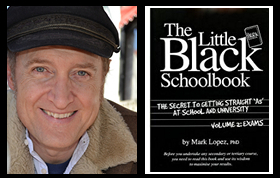Dr Mark’s The Meaning in a Nutshell
Ray Lawrence (director), Beatrix Christian (screenwriter), Jindabyne (2006)
The film Jindabyne (2006), directed by Ray Lawrence and written by Beatrix Christian, was adapted from the short story by the American writer Raymond Carver, ‘So much water so close to home’ (1981). The film examines the issue of moral responsibility, especially that of the living towards the dead. While doing this, it contrasts pragmatic realist and empathetic idealist responses to the moral problem of how to behave upon discovering a dead woman’s body in the wilderness. The film contrasts the attitudes of men and women, presenting men as tending towards the pragmatic realist response and women as tending towards the empathetic idealist response. Although the filmmakers accept the moral complexity of the issue, and that each side has a case, the filmmakers appear to side predominantly with the empathetic idealists.
Four male friends discover the body of an apparently murdered woman while on a much-looked-forward-to annual camping and fishing trip in the wilderness, away from civilisation. After some shock, emotional confusion and moral uncertainty as to what they should do, the men accept that the woman is dead and therefore they can do nothing to help her, so they tether the body to the river bank so it does not float downstream, and continue with their holiday, as planned, reporting the body to authorities upon their return. However, after their return, the men’s wives and girlfriends are outraged that they continued with their holiday, leaving the body in the river where they found it, and that they delayed reporting the murder. The police and most of the townsfolk are outraged as well.
The filmmakers introduced the issue of race (which was not in the original short story) by making the body that of an Aboriginal woman. This allowed the filmmakers to explore divisions in empathy and understanding between the white and Aboriginal populations. The film suggests that the white men were privileged and guilty of unconscious racial and gender bias. If the body was white and male, perhaps they would have acted differently. The men’s lack of urgency suggests disrespect, and the tethering of the body with fishing line damaged the corpse and this could be seen as violating the dead Aboriginal woman’s body. The local Aboriginal community is the most aggrieved of all, and some of them vandalise property of the four men. The film suggests that, for centuries, the Aborigines have been devalued and disrespected by whites, even by those who may see themselves as well-meaning, good-intentioned and as good people. The Aborigines are depicted as the inheritors of centuries of injustice so their retaliation is presented as understandable since they interpreted the behaviour of the four men as yet another injustice. The filmmakers suggest that white people need to treat Aborigines with greater cultural sensitivity and respect. The film concludes on an optimistic note, suggesting that the path to reconciliation is tortuous but the obstacles are ultimately surmountable.
The film raises issue of sexism by suggesting that the four men exhibited an unconscious bias in favour of other men, inadvertently treating women as less deserving of respect. The film conveys this by depicting women in the community as more aware of the moral issues raised by the behaviour of the four men than the four men themselves.
While exploring these principal themes, the filmmakers were also interested in examining the sometimes difficult dynamics of relationships through its treatment of four couples, Stewart and Claire, Carl and Jude, Rocco and Carmel, and Billy and Elissa. Most of the couples were experiencing stresses and challenges in the dynamics of their relationships before the public scandal surfaced. The middle-aged Stewart and Claire suffer because Stewart is chronically unable to comprehend how his wife Claire feels and therefore find a way to heal their deteriorating relationship. Carl and Jude are grandparents struggling to raise their troubled granddaughter after the death of the girl’s mother. The scandal shakes them but sees them rally together. Rocco and Carmel are in an inter-racial relationship (he is white and she is an Aborigine) which presents long-term challenges in negotiating contrasting cultural sensitivities that are exacerbated by the public scandal. The younger couple, Billy and Elissa, have the least problems of the couples, being more happy-go-lucky. Yet the controversy sees them choose to leave town until the scandal blows over.
The film also attempts to elicit a fascination with the Australian landscape, treating it as an ancient land and imbuing it with a sense of spirituality, mystery, and the supernatural.
Student resources by Dr Mark Lopez
© Mark Lopez 2021 All RIGHTS RESERVED
The purpose of the concise notes of Dr Mark’s The Meaning in a Nutshell is to provide much needed help to students seeking to unlock the meaning of the texts with which they have to deal. (More elaborate notes are provided in lessons as part of my private tutoring business.)
Subject: Jindabyne meaning, Jindabyne themes, Jindabyne analysis, Jindabyne notes
